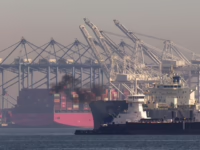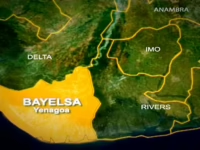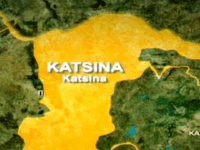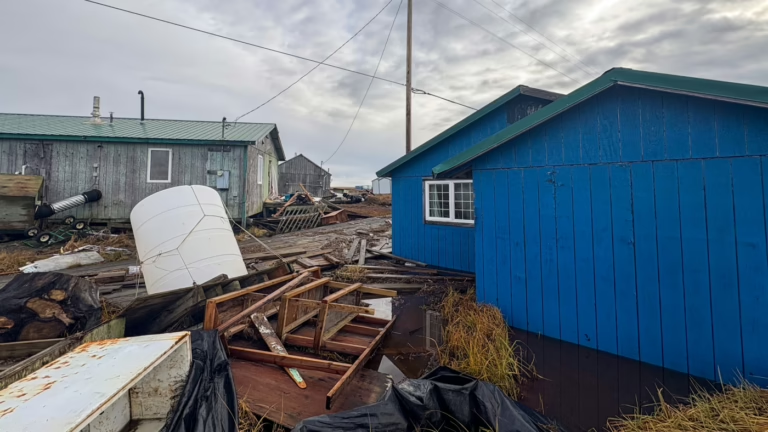Typhoon Halong’s remnants swept homes off their foundations and scattered debris throughout the Western Alaska village of Kwigillingok on Thursday, October 16, 2025. The storm caused residents to lose boats, four-wheelers, and snowmobiles, some of which were found miles away from the community.
Nat Herz/KYUK
In the early hours of October 11, the leftover force of Typhoon Halong struck Alaska’s southwestern coastline, unleashing hurricane-strength winds and unprecedented flooding across numerous Alaska Native communities.
Eyewitnesses and rescue teams report widespread devastation: utility poles snapped like twigs, boardwalks-serving as the main thoroughfares in many tundra villages-were torn apart, and houses were uprooted from their bases, some still occupied by families during the chaos.
State officials confirm that over a thousand residents have been displaced, with many left homeless. Tragically, one woman was confirmed dead, and two relatives remain unaccounted for. Alaska’s Emergency Operations Center has escalated to its highest alert level, and Governor Mike Dunleavy has requested federal disaster assistance for the affected areas.
Which areas suffered the most?
The impact of Typhoon Halong’s remnants was widespread across the Yukon-Kuskokwim Delta, a vast region in Western Alaska roughly the size of Oregon, isolated from the U.S. road network and dotted with numerous small villages.
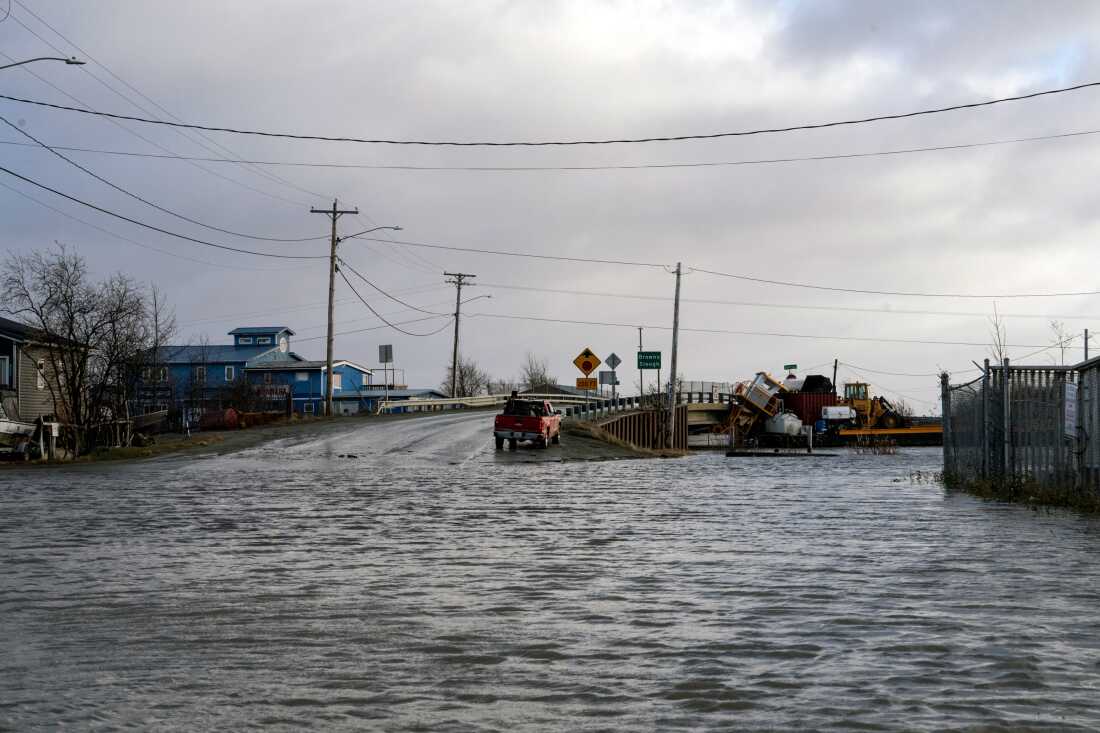
Early on October 12, 2025, a barge collided with the Brown’s Slough bridge in Bethel.
MaryCait Dolan/KYUK
The villages of Kipnuk and Kwigillingok bore the storm’s harshest blows and are undergoing near-total evacuations, according to the State Emergency Operations Center.
Regional health authorities have identified over a dozen villages with severe damage, while nearly 50 communities have reported varying degrees of impact. Damage assessments are ongoing, and the full extent of permanent displacement remains uncertain.
Challenges in evacuation due to isolation
Initially, many displaced individuals found refuge in local schools. However, with critical infrastructure such as heating, fuel supplies, water, and sewage systems under strain, officials deemed these shelters unsafe for prolonged stays.
Emergency teams began relocating residents to Bethel, the region’s central hub with a population of about 6,500, which sustained relatively minor damage. Yet, the shelter capacity there was quickly overwhelmed, prompting further evacuations by air to Anchorage, located 400 miles away.
The remoteness of the affected areas significantly hampered evacuation efforts. Damage to runways in some villages forced reliance on helicopters, with U.S. Coast Guard teams evacuating residents in small groups of six at a time.
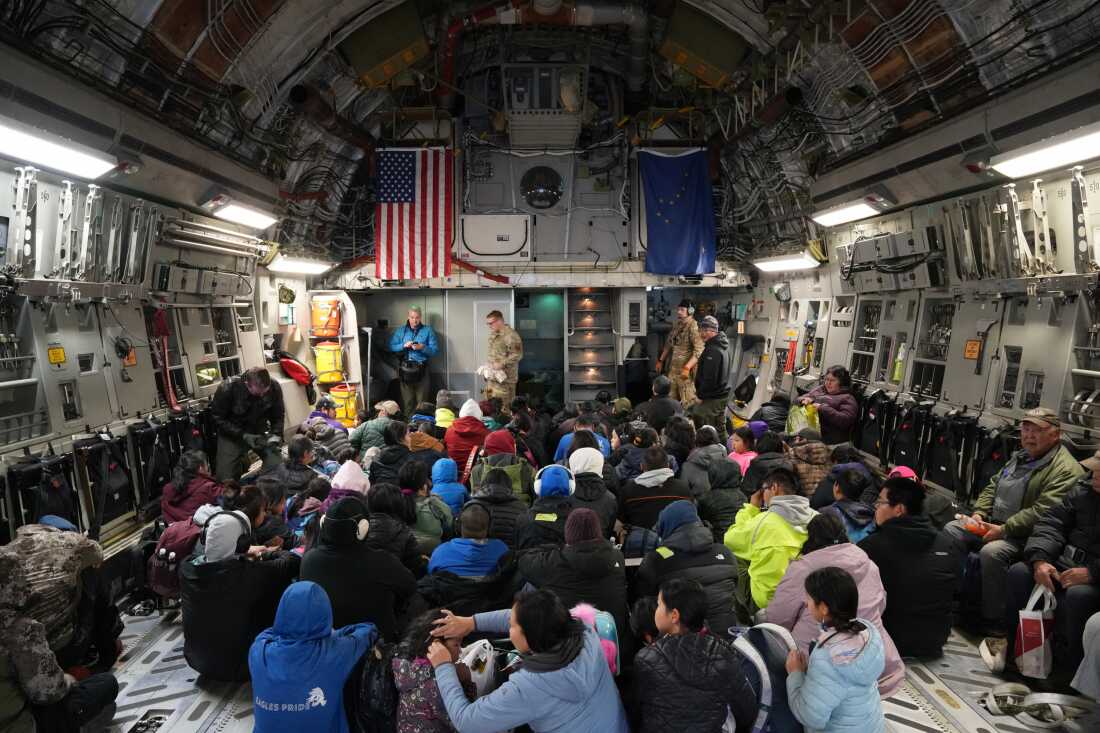
On October 16, 2025, residents of Kipnuk were airlifted via a C-17 military transport plane after the village suffered extensive damage from the typhoon’s remnants.
Eric Stone/Alaska Public Media
Buggy Carl, the tribal administrator of Kipnuk, expressed the emotional difficulty residents face in leaving their ancestral lands. The Kuskokwim Delta villages are home to generations of Yup’ik people, deeply rooted in their environment.
“Their hearts are here,” Carl said on October 15. “They don’t know anywhere else because this is where they grew up. They rely on subsistence hunting year-round for food. Leaving is not an easy choice.”
This profound connection to land and traditional food sources is a major concern for those facing potential long-term displacement. Some who remain in damaged villages are focused on salvaging subsistence resources such as moose, musk ox, beluga whales, salmonberries, salmon, seal oil, and emperor geese.
Residents also mourn the loss of ancestral burial sites. In Kwigillingok, floodwaters unearthed coffins, which were reportedly piled near the airport runway after waters receded.
Why was this typhoon remnant so damaging?
Early climate models predicted the storm’s remnants would track northward. However, Rick Thoman, an Alaska Climate Specialist at the University of Alaska Fairbanks, explained that the storm accelerated and abruptly shifted course, heading directly toward the Yukon-Kuskokwim Delta coastline. This change occurred just a day and a half before the storm reached Alaskan waters, leaving little time for evacuation preparations.
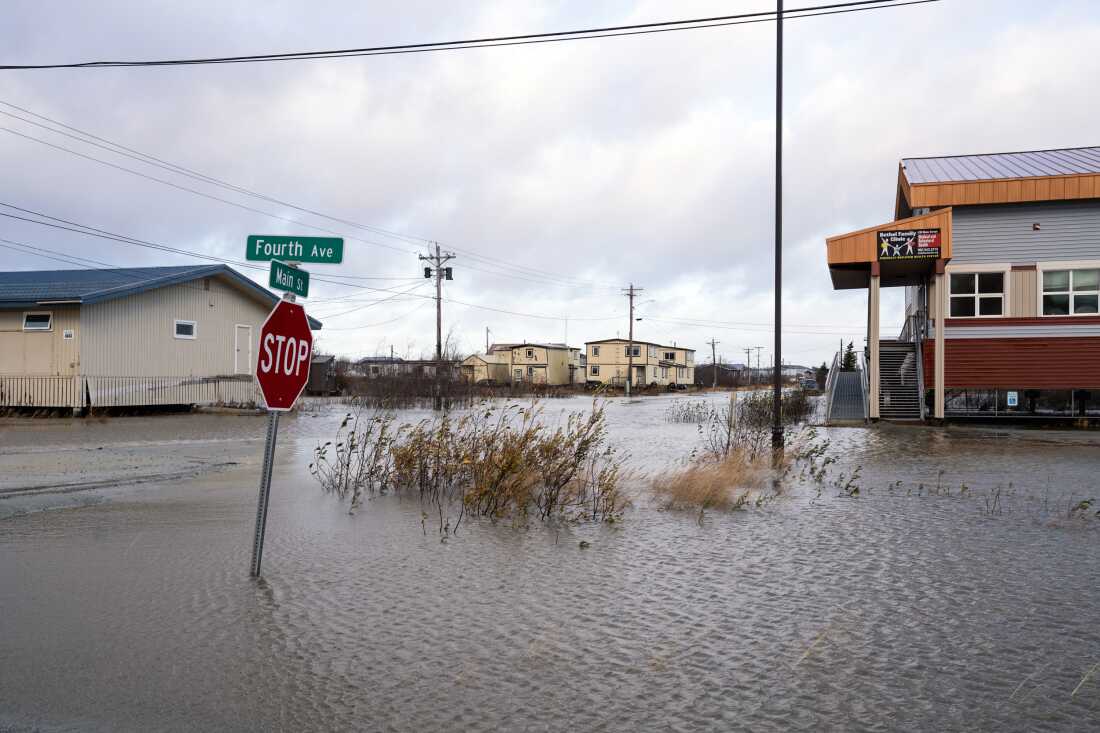
Flooding in Bethel on October 12, 2025, caused by high water levels after ex-Typhoon Halong.
MaryCait Dolan/KYUK
This area is at the forefront of climate change impacts. Permafrost-permanently frozen ground-supports many villages but is thawing rapidly, causing accelerated erosion and ground instability. The Alaska Native Tribal Health Consortium reports that nearly 150 communities in Alaska, many within the Yukon-Kuskokwim Delta, will require full or partial relocation in the coming years due to permafrost melt, land subsidence, erosion, or a combination of these climate-related challenges.
The vast tundra of the Delta lies close to sea level, with limited elevated terrain. While some structures are built on deep pilings, many homes rest on less secure foundations, making them vulnerable to flooding and erosion intensified by storms.
These environmental and structural vulnerabilities combined to amplify the damage caused by the storm’s flooding and winds.
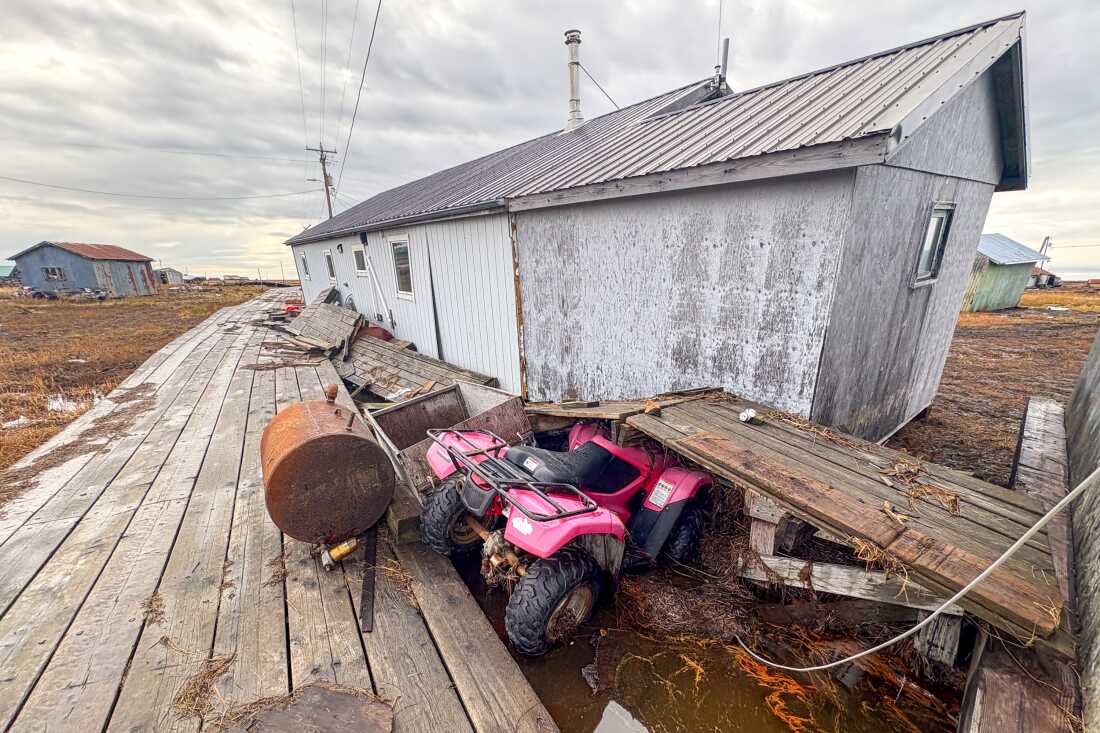
The aftermath of Typhoon Halong left homes adrift and debris strewn across Kwigillingok on October 16, 2025. Residents lost boats, ATVs, and snowmobiles, some displaced miles from the village.
Nat Herz/KYUK
Looking ahead
Rebuilding these communities will be a formidable challenge.
The cost and logistics of transporting construction materials to such isolated locations are significant obstacles.
Moreover, the region is still recovering from severe flooding last August. Kipnuk, one of the hardest-hit villages by Typhoon Halong’s remnants, was among the first Alaska Native communities to receive a federal disaster declaration following that earlier event.
For ongoing updates, you can follow KYUK’s detailed coverage of the storm here.
Reporting contributions by Nathaniel Herz and Evan Erickson.






